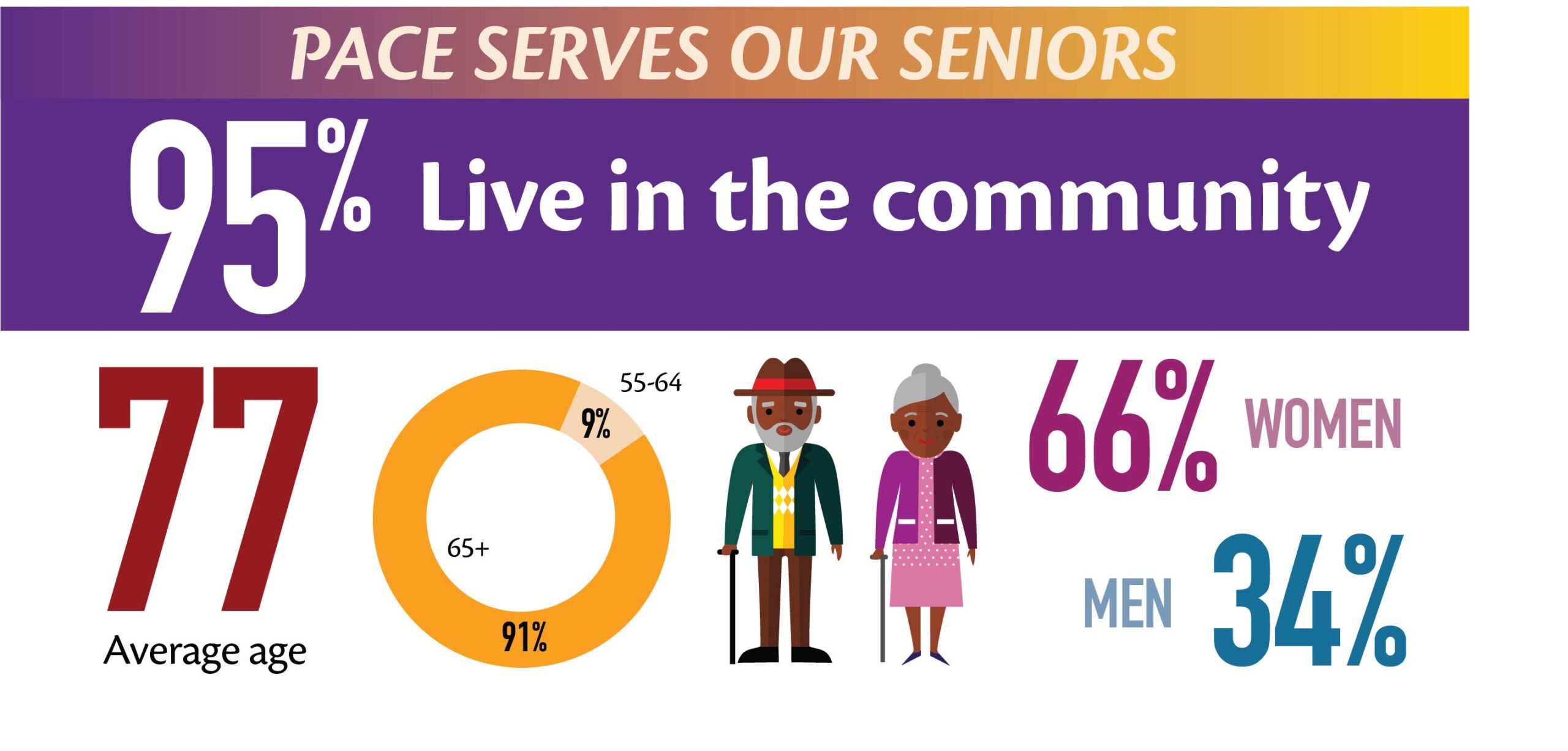
We Need to Pick Up the PACE
All-Inclusive Care Saves Resources and Promotes Better Health
Our family celebrated my brother David’s sixty-fifth birthday last week. He now joins the ranks of those who reached this milestone with ten thousand of his fellow Baby Boomers on that day. I am certain my brother is thrilled that I shared his landmark birthday with you. I mean, I am younger than him. At sixty-five you get the first real birthday present from the government. Medicare.

CMS Innovation Center
The USA Health and Human Service Administration continues to play the cat and mouse game with payers and providers. Did you know that Medicare Advantage (MA) was an innovative model as Medicare Choice under the Balance Budget Act. Of 1997? Seven years later it became MA under the Medicare Modernization Act.
The Center for Medicare and Medicaid Services Innovation Center continues to test new provider delivery models and payment systems to reduce cost and improve outcomes. Telehealth, remote patient monitoring, patient portals, home-based care, and other technology driven innovations can be found in these new models. But I have to ask, with all the data sharing, technology, and remote care capabilities, why do we continue to struggle to provide comprehensive medical and social care to Medicare and Medicaid insureds?
All-Inclusive Care First Demonstration Model
The Programs of All-Inclusive Care for the Elderly (PACE) has its roots in the 1970s when federal and state governments began exploring community-based services for elderly and disabled individuals. Waivers of federal Medicaid requirements allowed experimentation with fee-for-service programs, leading to the development of PACE at On Lok Senior Health Services in San Francisco. In fact, On Lok initially focused on providing long-term care services to frail elderly individuals who were at risk of institutional placement. On Lok continues to serve the community fifty years later with well-coordinated senior care.
With funding from The Robert Wood Johnson Foundation (RWJF), this model was replicated nationwide. In 1986, Congress authorized waivers for ten replication sites, and RWJF provided start-up grants and technical assistance. The first replication sites began demonstrations in 1990, and by 1994, there were ten replication sites operating under waivers.
Did you know that the first PACE demonstration continued until it was established as a permanent Medicare program by the Balanced Budget Act of 1997? The PACE Protocol was developed in 1990 through a collaborative effort involving CMS, states, and PACE sites. Many features of PACE from the demonstration phase, such as the focus on the frail elderly and capitated funding mechanism, carried over into the permanent program. The expansion continued in In 2006 when CMS awarded $7.5 million in grant funds to organizations developing PACE programs in rural service areas, as part of the Deficit Reduction Act of 2005. As of late 2023, the National Advisory Committee on Rural Health and Human Services reports there are currently 150 PACE programs operating 273 centers in 32 states with a number of pending applications across the country.
David is Sixty-Five
Now that David Stynchula is sixty-five years old (and older than me), I worry about the quality of care he receives in the decades to come when he really starts to fall to pieces. Like every other family, we struggle to navigate our fragmented care system. A key feature of PACE is its multidisciplinary approach. A team consisting of doctors, nurses, therapists, social workers, and other professionals assesses each participant’s needs comprehensively. Based on this assessment, they develop and implement an integrated care plan tailored to the individual. Lastly, research has shown that participation in PACE programs not only reduces caregiver burden but also decreases emergency room visits, hospital admissions, and nursing home placements for seniors.
Advantages
One of the most significant advantages of PACE is its ability to facilitate seniors in comfortably aging in their homes or chosen assisted living communities. By providing comprehensive medical and social services, PACE enables seniors to avoid the necessity of moving into Medicaid-approved nursing homes, maintaining their independence and quality of life.
Moreover, PACE adopts a holistic approach to care, addressing not only the health needs but also the overall well-being of participants. This means that seniors enrolled in PACE receive personalized care from a team of caregivers who are attentive to their physical, emotional, and social needs, fostering a sense of dignity and comfort.
Another benefit of PACE is the comprehensive care and social stimulation it offers. While the extent of social activities may vary by center, PACE programs often provide opportunities for seniors to engage in social interactions, reducing the risks of senior isolation and promoting mental well-being.
Disadvantages
The primary disadvantage of PACE is its limited availability, as it is only offered in select areas across the United States. Seniors interested in enrolling in PACE must reside within a certain mile radius of the local PACE center, which may pose logistical challenges for individuals living in remote or underserved regions. However, technology, telehealth, and remote care are extending their reach.
Furthermore, once enrolled in PACE, seniors are restricted to receiving their Medicare or Medicaid benefits solely through the program. This means that participants forfeit the option to join other Medicare drug plans or healthcare programs, potentially limiting their choices and flexibility in managing their healthcare needs.
Additionally, transitioning to PACE may require seniors to change their healthcare providers, including doctors and other caregivers. This adjustment can be unsettling for some seniors who have established relationships with their current healthcare providers, leading to reluctance or resistance towards enrolling in PACE.
PACE for All
I know David does not want nursing home care in the future. In fact, no one wants to leave their community of family and friends especially when feeling sick and vulnerable. My hope is the CMS Innovation Center will embrace PACE for all upon enrolling in Medicare. Think of it as a dynamic personalized long-term care plan and data repository for the aging journey ahead. Everyone deserves a Program for All-Inclusive Care but let’s change that elderly part. Happy birthday, David.



